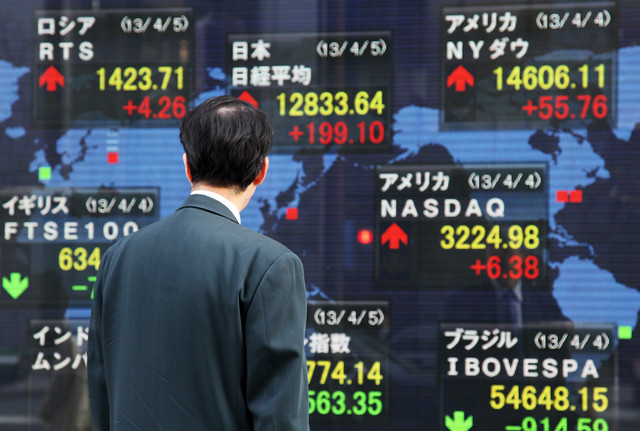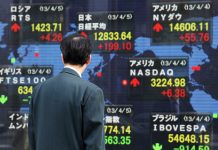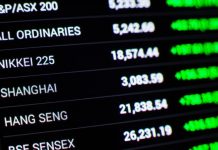
SINGAPORE: Asian shares found a slightly firmer footing on Friday to set course for their first gains in two weeks, but the rout continued in Shanghai where shares hit lows last seen in 2014.
Investor sentiment was frail though as Wall Street’s fear gauge rose to an eight-month high, pointing to more downside risk, market sources said.
The biggest market shakeout since February has been blamed on a series of factors, including worries about the impact of a Sino-U.S. trade war, a spike in U.S. bond yields this week and caution ahead of earnings seasons.
MSCI’s broadest index of Asia-Pacific shares outside Japan rose 1.3 percent, led by gains in South Korea and Taiwan.
The MSCI index fell 3.6 percent on Thursday to hit a 1-and-a-1/2 year low. It is on track for a weekly loss of more than 4 percent.
Japan’s Nikkei average fell 0.5 percent while the Shanghai Composite dropped as much as 1.8 percent to the lowest levels since late 2014, taking losses so far this week to almost 10 percent.
Wall Street offered Asia a weak lead overnight with the U.S. S&P 500 falling just over 2 percent to a three-month low, following a 3.29 percent drop on Wednesday.
The futures of the U.S. index ESc1 rebounded 0.6 percent in Asian trade on Friday, in part helped by media report that the U.S. Treasury Department will not call China a currency manipulator in its upcoming semiannual report.
However, Chinese trade figures on Friday showed China’s trade surplus with the United States hit a record high in September, providing a likely source of contention with U.S. President Donald Trump over trade policies and the currency.
The data showed solid expansion in China’s overall imports and exports, suggesting little damage from the tit-for-tat tariffs with the United States.
CBOE Volatility index rose on Thursday to its highest close since Feb 12, pointing to investors’ concern of further losses in markets.
So far this week, Chinese and U.S. shares are among the worst performers in a sign investor worries about the trade war are deepening.
MSCI’s U.S. index has shed 5.5 percent, compared with a 4.9 percent fall for MSCI’s gauge of stock performance in 47 countries.
Gold, typically seen as a safe-haven asset at times of high uncertainty, held steady on Friday.
It fetched $1,221.9 per ounce, keeping the 2.5 percent gain from Thursday, which was its biggest percentage rise since June 2016.
The yield on 10-year U.S. notes edged up 3.6 basis points in Asia to 3.167 percent US10YT=RR.
It is still off its seven-year high of 3.261 percent touched on Tuesday, but a further rise in the U.S. borrowing costs could hurt risk sentiment.
Adding confusion for investors, Trump launched a second day of criticism of the Federal Reserve on Thursday, calling its interest rate increases a “ridiculous” policy.
While that does not appear to have shaken investor confidence in the Fed’s independence, some investors suspect expectations on future rate hikes could be undermined if Trump raises his threats levels.
Lower U.S. yields on Thursday helped push the dollar lower against a basket of major currencies.
The euro ticked up slightly to $1.1605, after a gain of 0.65 percent on Thursday.
But the yen eased to 112.35 to the dollar after hitting a three-week high of 111.83 on Thursday.
The Chinese yuan weakened about 0.3 percent, giving up some of the gains it had made the previous day.
Oil prices bounced back on Friday.
Brent crude futures rose 0.5 percent to $80.66 a barrel, holding off a four-year high of $86.74 touched on Oct 3.
West Texas Intermediate (WTI) crude futures edged up 0.44 percent to $71.28 a barrel, also off its multi-year highs touched last week.






